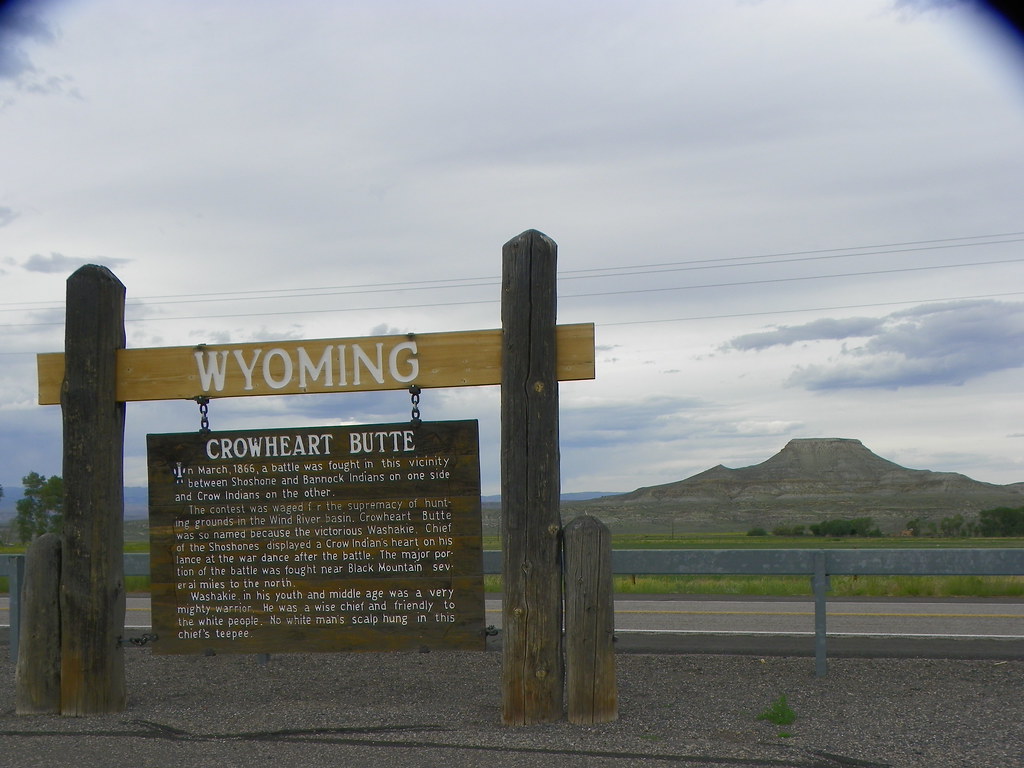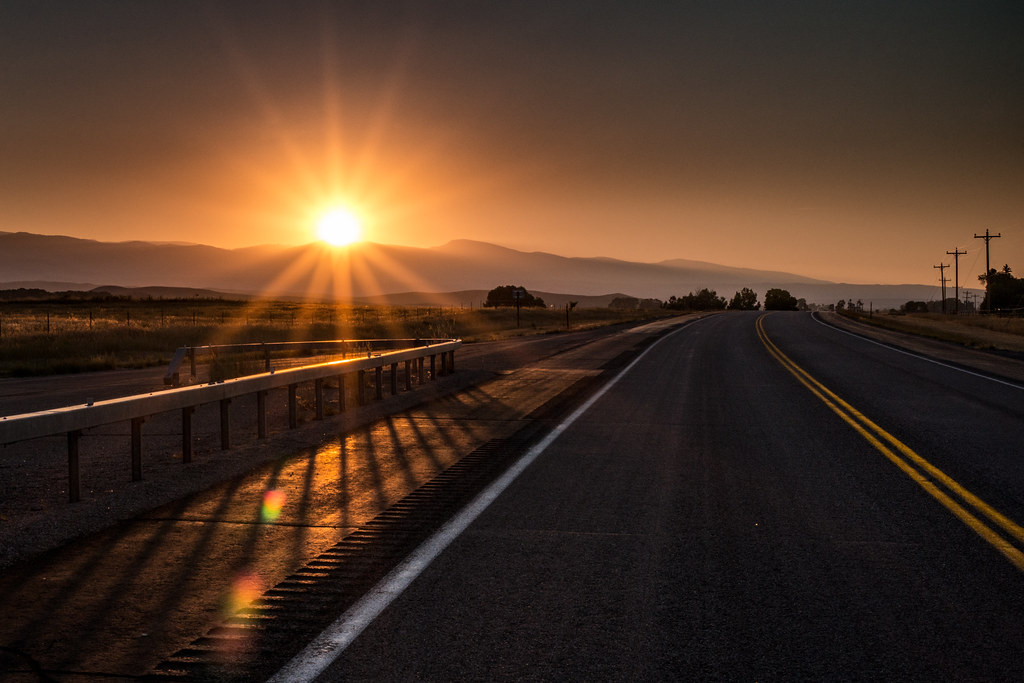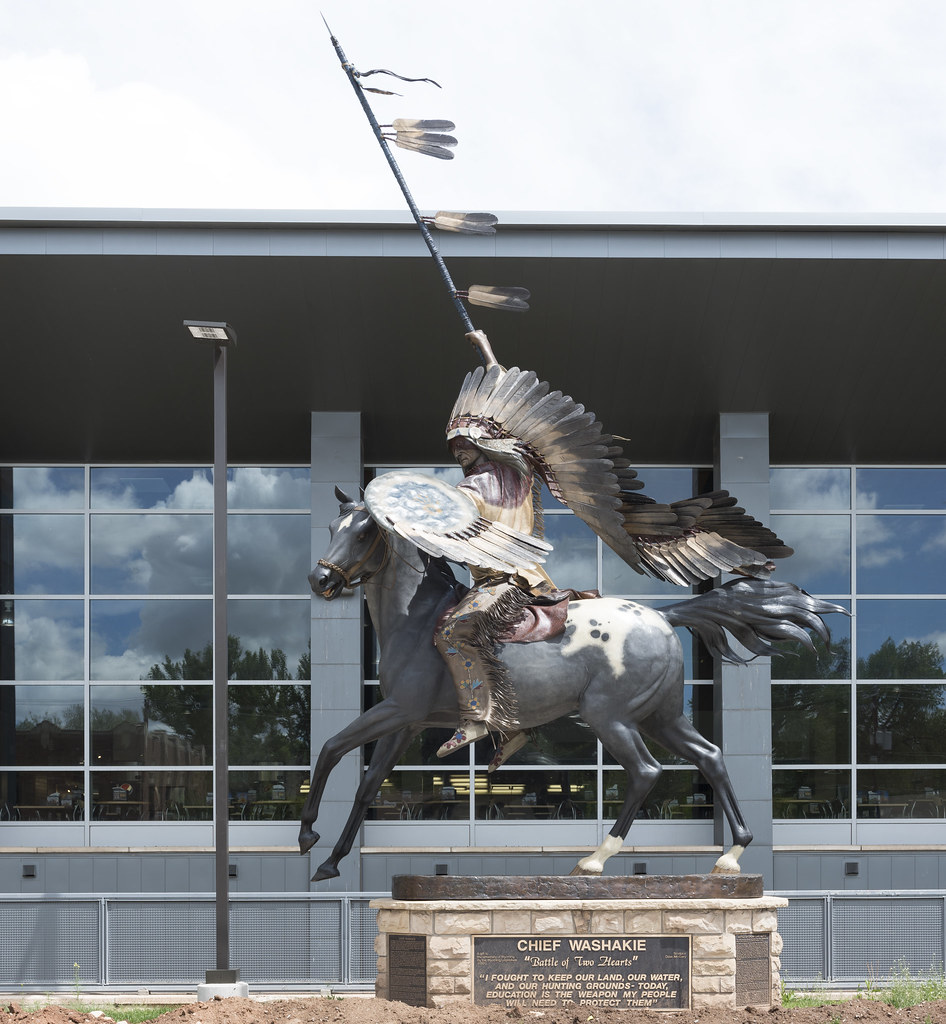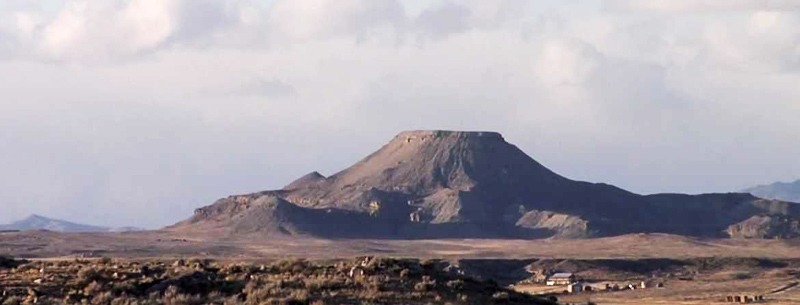Crowheart Butte, Wind River Indian Reservation Wyoming
This fabled butte is quite real and rises up out of the landscape in the Wind River Valley, just northeast of Crowheart, Wyoming. It can be seen for miles, taking on the look of a pyramid, with a shaved-off top. This landmark on the Wind River Indian Reservation is unique and comes by its name from the historic battle that was fought on its small mesa.

Standing proudly at an elevation of 6,956 feet, Crowheart Butte is a towering monolith that commands attention. Its distinctive shape and rugged outline make it instantly recognizable, serving as a silent testament to the power of natural forces. But how exactly did this remarkable formation come to be?
The story of Crowheart Butte begins millions of years ago during the tumultuous era of geological upheaval. Layers upon layers of sediment were deposited over time, gradually building up the foundation of the butte. As the forces of nature continued their relentless dance, the earth shifted and folded, giving rise to the unique geological features we see today.
Archaeological Discoveries
Crowheart Butte, a majestic and iconic landmark nestled in the vast Wyoming landscape, holds not only breathtaking beauty but also a wealth of historical and cultural significance. Through archaeological discoveries and extensive research, we gain a deeper understanding of the sacred stories that enshroud this prominent butte.
Over the years, numerous archaeological excavations have taken place in the vicinity of Crowheart Butte, unearthing artifacts and clues that shed light on the ancient civilizations that once thrived in this region. These findings have provided archaeologists with valuable insights into the lives and customs of the Native American tribes who called this land their home for centuries.

One of the most remarkable discoveries came in the form of petroglyphs, intricate rock carvings engraved onto the butte’s surface. These petroglyphs depict various symbols, animals, and human figures, intricately etched by the hands of those who roamed these lands long ago. Archaeologists meticulously study these petroglyphs, aiming to decipher their meanings and unravel the stories they tell.
Additionally, archaeological studies have revealed evidence of ancient campsites, hunting tools, and pottery fragments, offering glimpses into the daily lives and activities of the indigenous peoples who inhabited the area. Through careful analysis, experts have been able to reconstruct the lifestyles, traditions, and spiritual beliefs of these early inhabitants, forming a more comprehensive narrative of the region’s rich history.
The ongoing research conducted at and around Crowheart Butte continues to yield fascinating insights into the cultural heritage of Wyoming’s native tribes. It allows us to honor and appreciate the enduring legacy of those who walked these lands long before us, fostering a deep sense of connection to the past.
Visiting Crowheart Butte
Access points to Crowheart Butte may vary depending on your desired experience. The most common access point is through the Crowheart Butte State Archaeological Site, which offers designated trails and viewpoints for visitors. It is important to follow the park’s guidelines and stay on designated paths to preserve the delicate ecosystem of the area.

As with any outdoor adventure, safety considerations should be a top priority. Before embarking on your journey, check the weather conditions and be prepared for changes in temperature, as Wyoming’s climate can be unpredictable. It is also advisable to carry essential supplies such as water, snacks, sunscreen, insect repellent, and appropriate footwear.
Crowheart Butte was the site of a four-day battle had raged at its base in 1866. It was here where the Shoshones and Bannocks fought the Crows over hunting rights on the lands. As it was, the Crows had been given the valley in the Fort Laramie Treaty of 1851. The Shoshones and Bannocks were given the valley in the Fort Bridger Treaty of 1863. Now, three years later, the Nations went to war. And after four bloody days of battle, there was a stalemate. And it was then that the enemies agreed to one final battle, a one-on-one, man-on-man, fight to the death. And the two warriors in this final showdown would be two Chiefs. Shoshone Chief Washakie and Crow Chief Big Robber fought to the death that day on Crowheart Butte.
Why was it named Crowheart Butte?
But why Crowheart Butte? Well, after a fierce hand-to-hand fight, it was Chief Washakie (see below) who was the victor. The story goes that the victorious Shoshone Chief and warrior removed the heart of his foe and displayed it on his lance. Hence, the name Crowheart Butte.
Crowheart Butte was the site of a four-day battle that had raged at its base in 1866. It was here where the Shoshones and Bannocks fought the Crows over hunting rights on the lands. As it was, the Crows had been given the valley in the Fort Laramie Treaty of 1851. The Shoshones and Bannocks were given the valley in the Fort Bridger Treaty of 1863. Now, three years later, the Nations went to war. And after four bloody days of battle, there was a stalemate. And it was then that the enemies agreed to one final battle, a one-on-one, man-on-man, fight to the death. And the two warriors in this final showdown would be two Chiefs. Shoshone Chief Washakie and Crow Chief Big Robber fought to the death that day on Crowheart Butte.
Crowheart Butte is still a sacred sight to many locals and, to this day used as a place of spiritual renewal for young men on a vision quest. And non-Indians are legally forbidden to climb Crowheart Butte.
The Great Chief Washakie
No one has ever been more revered by his people. And more respected by all during the tumultuous age of the Indian Wars and the massive immigrant migration of the 1800s in the Wyoming Territory. The Great Shoshone Chief Washakie, born in 1798, would live a life of courage and leadership up until he died in 1900.

He was born to a Flathead father and a Shoshone mother and named Pina Quanah, “the smell of sugar” in Shoshone. It was later, now a young warrior, that Pina Quanah took the name Washakie. It means “the rattler”, and was taken from a rattle he used to scare Sioux ponies during raids. After the young Washakie’s father was killed in a battle with the Blackfeet, he and his mother fled to the safety of the Lehmi Tribe and eventually the Green River Snake Tribe. But he would eventually return to his native land and his native people and would become Washakie, Chief of the Shoshone Nation, in 1850.
Twenty years earlier, Washakie had met and become friends with Jim Bridger. Washakie made it a point to learn English, and he would come to understand and fully realize what was coming to his land. The Shoshone way of life was in for a major change, and Washakie, the future Shoshone Chief, knew it.
The great Shoshone leader, once the fearless and battle-hardened warrior, would press for a peaceful existence with neighboring Indian nations and would help guide his people into the formation of the Shoshone Reservation. Chief Washakie dealt with the white man on an equal footing of respect and friendship, and would eventually cede lands for the Shoshones near Thermopolis that contained healing waters.
Chief Washakie died at age 102, on the Wind River Reservation on February 22, 1900. The Great Chief was buried with full U.S. Military honors, the only Indian chief to be so honored. He had served his nation as its leader for 60 years. His name lives on, with more than a dozen places in Wyoming, that take the name Washakie.
Chief Washakie, was one of the great warriors and peacemakers in American history. And, of course, a true Wonder of Wyoming.
Final Word
We hope you enjoyed our journey into the sacred stories of Crowheart Butte, one of Wyoming’s most prominent landmarks. Delving into the rich history and folklore surrounding this majestic formation has allowed us to gain a deeper appreciation for the cultural significance it holds. As we conclude this exploration, we encourage you to visit Crowheart Butte and witness its awe-inspiring beauty firsthand. Let the stories and legends whispered by the wind guide you through an unforgettable experience, connecting you to the ancient traditions of this sacred land.
